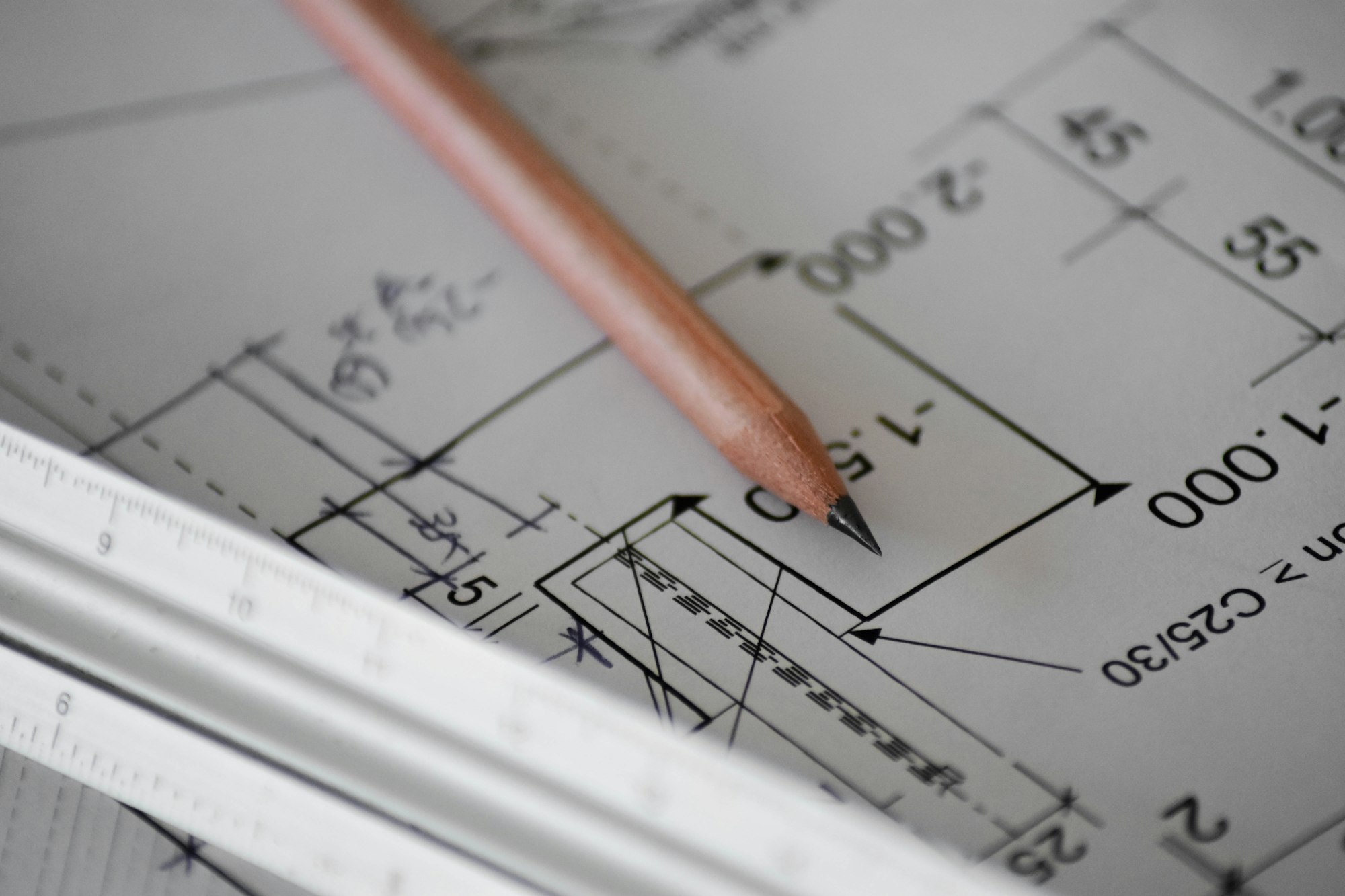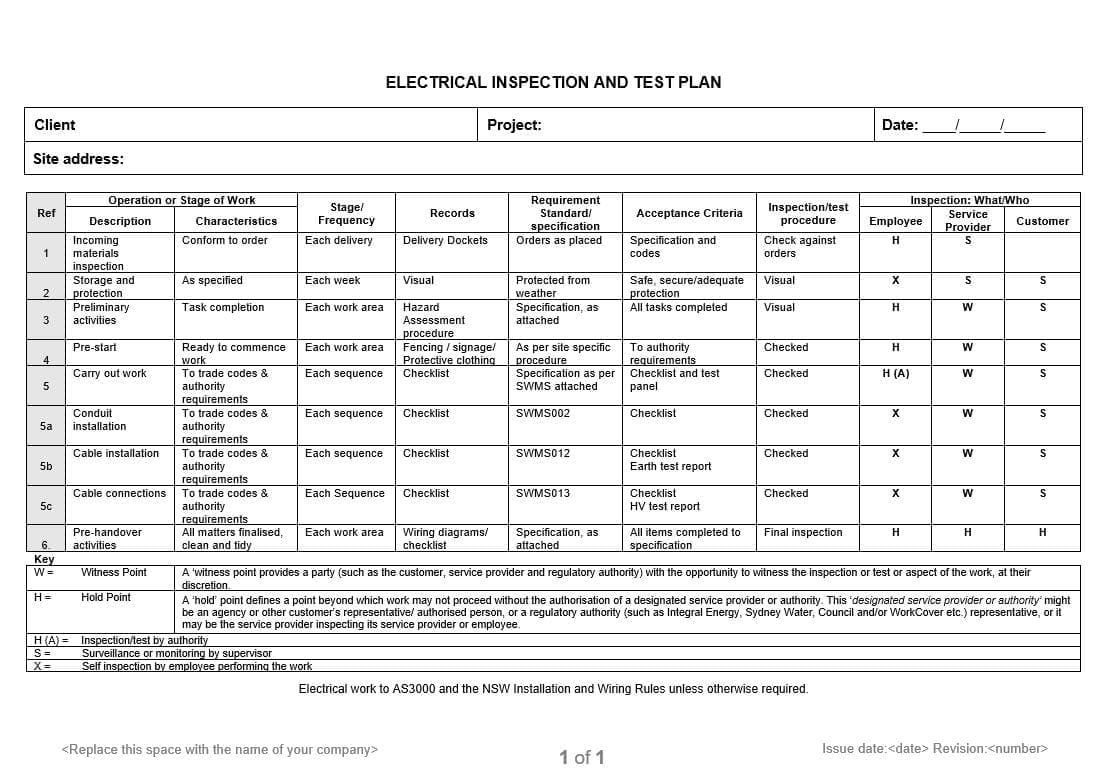Introduction
Building your new home is both exciting and complex. Amidst all the decisions and processes, you'll encounter various documents, with construction drawings being a very important piece. These detailed illustrations serve as the blueprint for your home's construction, guiding every tie down rod, brace wall and fixture location.
Understanding the sizes of construction drawings is very important. It ensures effective communication with your design team, helps in interpreting the plans accurately, and helps in making informed decisions throughout the construction process.
This guide will walk you through the basics of construction drawing sizes, their significance, and how they fit into your construction project.
📐 What Are Construction Drawings?
Construction drawings are detailed, scaled graphical representations that show the design, dimensions, and specifications of a building project.
Purpose of Construction Drawings
These drawings are pivotal in translating conceptual designs into tangible structures. They provide:
- Visual Guidance: Offering a clear depiction of the building's layout, dimensions, and spatial relationships.
- Technical Specifications: Detailing materials, construction methods, and compliance with building codes.
- Communication Tool: Facilitating coordination among various professionals involved in the construction process.
- Legal Documentation: Serving as part of the contractual agreement and necessary for obtaining building permits.
Key Components of Construction Drawings
A comprehensive set of construction drawings typically includes:
- Title Block: Located on each sheet, it contains essential information such as project title, drawing number, date, scale, and the names of the architect or firm.
- Floor Plans: Top-down views illustrating room layouts, wall placements, doors, windows, and furniture arrangements.
- Elevations: Flat representations of each side of the building, showing exterior finishes, heights, and architectural details.
- Sections: Cross-sectional views that reveal the internal structure, showcasing how different components like floors, walls, and roofs interact.
- Detail Drawings: Enlarged illustrations focusing on specific elements such as staircases, joinery, or intricate architectural features.
- Schedules: Tabulated data listing details about doors, windows, finishes, and fixtures.
- General Notes: Supplementary information providing instructions, codes, and standards relevant to the construction process.
Types of Construction Drawings
Construction drawings come in different specialised types, each serving a purpose:
- Architectural Drawings: Depict the overall design, aesthetics, and spatial relationships within the building.
- Structural Drawings: Detail the framework, including beams, columns, and foundations, ensuring the building's stability and integrity.
- Mechanical, Electrical, and Plumbing (MEP) Drawings: Illustrate the layout and specifications of HVAC systems, electrical circuits, and plumbing networks.
- Site Plans: Show the building's orientation on the plot, including landscaping, access points, and utility connections.
- Shop Drawings: Provided by contractors or manufacturers, these detail the fabrication and installation of specific components like cabinetry or steel structures.
- As-Built Drawings: Reflect the final construction, incorporating any changes made during the building process.
👷 When and Why Do You Need Construction Drawings?
1. Design and Planning Phase
At the outset, construction drawings are essential for translating your vision into a tangible plan. They provide a comprehensive overview of the architectural design, including floor plans, elevations, and sections. These drawings allow you to visualise the spatial layout, room sizes, and overall aesthetics of your future home.
Moreover, construction drawings facilitate collaboration with your design team, including architects and engineers. They enable discussions about materials, finishes, and structural elements, ensuring that your preferences are accurately incorporated into the design.
2. Securing Building Permits
Before construction can commence, obtaining a building permit from local authorities is typically required.
Detailed construction drawings are a prerequisite for this process, as they demonstrate compliance with local building codes and regulations. These drawings provide officials with the necessary information to assess the safety, accessibility, and environmental impact of your proposed construction.
Therefore, ensuring that your construction drawings are thorough and adhere to industry standards is essential for a smooth approval process.
3. Construction Execution
Once permits are secured, construction drawings become the blueprint for the actual building process. Contractors and builders rely on these documents to understand the specifications, dimensions, and materials required for each component of the structure. This includes engineering drawings for structural elements, electrical drawings for wiring layouts, and mechanical systems plans for HVAC installations.
Accurate construction drawings ensure that the construction team can execute the project efficiently, minimising errors and reducing the likelihood of costly modifications during the build.
4. Project Management and Coordination
Construction drawings serve as a communication tool among all stakeholders involved in the project. They provide a common reference point for architects, engineers, contractors, and suppliers, facilitating coordination and ensuring that everyone is aligned with the project's objectives.
Additionally, these drawings assist in scheduling and resource allocation, as they outline the sequence of construction activities and the materials required at each stage. This level of detail aids in maintaining timelines and budgets, contributing to the overall success of the construction project.
5. Future Maintenance and Renovations
After the completion of your home, construction drawings remain a valuable resource for future maintenance, repairs, or renovations. They provide detailed information about the building's structure, systems, and materials, enabling homeowners and professionals to make informed decisions when modifications are needed.
For instance, knowing the exact location of electrical wiring or plumbing lines can prevent accidental damage during renovations and ensure that any updates are compatible with the existing infrastructure.
⚠️ Standard Sizes of Construction Drawings
The A series is based on the metric scale and is used extensively across Europe, Australia, and many other countries. It’s what most architectural drawings, engineering projects, and government submissions will adhere to outside the United States.
The primary standards include:
ISO A-Series (International Standard)
Commonly used globally, especially in countries adhering to the metric system.
- A0: 841 x 1189 mm (33.1 x 46.8 inches) - Entire project overview, large site plans
- A1: 594 x 841 mm (23.4 x 33.1 inches) - Floor plans, large-scale detail drawings
- A2: 420 x 594 mm (16.5 x 23.4 inches) - Smaller buildings, internal layouts
- A3: 297 x 420 mm (11.7 x 16.5 inches) - Office copies, contractor prints
- A4: 210 x 297 mm (8.3 x 11.7 inches) - Notes, permits, basic construction documents
These sizes have a fixed aspect ratio (1:√2), which makes it easier to scale drawings up or down without altering proportions
—essential for maintaining accurate scaling and precise measurements.
ANSI Sizes (American National Standards Institute)
In the United States, the ANSI sizes are more common, particularly for engineering drawings and documentation related to mechanical systems.
- ANSI A: 8.5 x 11 inches - Admin papers, notes
- ANSI B: 11 x 17 inches - Schematics, general notes
- ANSI C: 17 x 22 inches - Medium-detail construction drawings
- ANSI D: 22 x 34 inches - Most popular for architectural plans, electrical drawings
- ANSI E: 34 x 44 inches - Full architectural design, building size overview
If you're reviewing building plans or standard construction documents in North America, expect to see ANSI D and E sizes frequently.
ANSI sizes follow a simple doubling system—each larger size is double the previous in area.
ARCH Series (Architectural Sizes)
The ARCH series is designed specifically for the construction industry, with dimensions that better match the needs of scale drawings and common architectural layouts. They’re widely used in the U.S., particularly by architects who require larger or custom drawing modes for specific projects.
- ARCH A: 9 x 12 inches - Small-scale diagrams, admin
- ARCH B: 12 x 18 inches - Design sketches, small electrical drawings
- ARCH C: 18 x 24 inches - Site layouts, roof beams, framing layouts
- ARCH D: 24 x 36 inches - Standard for full architectural drawings
- ARCH E: 36 x 48 inches - Full construction plans, large-format full-size drawing
The larger size of ARCH E allows for a higher level of detail, which is especially useful when working with vector graphics, detailed drawings, or larger scale components.
🏗️ A Quick Comparison
- ISO A1 (common in Australia and Europe) is roughly equivalent to ARCH D in size and usage.
- Full-size drawings typically refer to ARCH D, ARCH E, or A1, depending on where you are.
- A half size print of ARCH D would be equivalent to ARCH B in physical size but will need a clear note on scale ratio (e.g., 1:100 reduced to 1:200) to avoid confusion.
- ANSI D size is the popular choice for U.S. architectural work, often referred to casually as "full-size blueprints."
💡 Why So Many Sizes?
Different paper sizes serve different specific purposes.
Here’s a quick guide:
- Use larger sheets like A0, ARCH E, or ANSI E when you need to show entire project layouts, complex mechanical systems, or a detailed site plan.
- Go with medium sizes like A1, ARCH D, or ANSI D for your floor plans, architectural design, and construction drawings—these are the sizes most often seen on-site.
- Stick to smaller sizes like A3 or ANSI B for general notes, smaller details, or extra cost-sensitive tasks like mass printing for contractors.
🧑💼 Who Typically Creates and Manages Construction Drawings?
Architects
Architects are the primary visionaries in the construction process. They conceptualise and design the overall structure, ensuring that the building is both functional and aesthetically pleasing. Their responsibilities include:
- Developing comprehensive architectural drawings, such as floor plans, elevations, and sections.
- Ensuring designs comply with local building codes and regulations.
- Coordinating with other professionals to integrate various systems into the design.
- Overseeing the project to ensure the construction aligns with the approved plans.
Architects play a pivotal role in transforming a client's vision into a tangible structure, balancing creativity with practicality.
Engineers
Engineers focus on the technical aspects of the construction project, ensuring the building's safety, stability, and functionality. Different types of engineers contribute to the construction drawings:
- Structural Engineers: Design the building's framework to withstand loads and stresses.
- Mechanical Engineers: Plan the heating, ventilation, and air conditioning (HVAC) systems.
- Electrical Engineers: Design the electrical systems, including lighting and power distribution.
- Plumbing Engineers: Develop the water supply and drainage systems.
Each engineer produces specialised drawings that detail their respective systems, ensuring they integrate seamlessly into the overall design.
Drafters
Drafters, also known as drafting technicians, draftsman or CAD operators, are responsible for creating precise technical drawings based on the designs provided by architects and engineers. Their tasks include:
- Using computer-aided design (CAD) software to produce detailed 2D and 3D drawings.
- Ensuring drawings adhere to industry standards and accurately represent the design intent.
- Collaborating with architects and engineers to incorporate any changes or updates.
- Maintaining and organising all construction documents for easy access and reference.
Drafters play a important role in translating conceptual designs into actionable plans that builders can follow.
Project Managers
Project managers oversee the entire construction process, ensuring that the project stays on schedule, within budget, and meets quality standards. Their responsibilities related to construction drawings include:
- Coordinating between different teams to ensure all drawings are up-to-date and accurately reflect the project's scope.
- Managing the distribution of construction documents to relevant stakeholders.
- Monitoring progress and making adjustments as necessary to address any issues that arise.
- Ensuring compliance with all regulatory requirements and obtaining necessary approvals.
Effective project management is essential for the successful execution of construction drawings and the overall project.
Collaborative Effort
The creation and management of construction drawings are inherently collaborative. Architects, engineers, drafters, and project managers must work closely together, communicating effectively to ensure that every aspect of the design is accurately represented and executed. This collaboration ensures that the final structure meets the client's expectations and adheres to all safety and regulatory standards.
Understanding the roles of these professionals provides insight into the complexity and precision required in creating and managing construction drawings. Each plays a vital part in bringing a construction project from concept to reality.
📐 Why Should You Use Construction Drawings and Understand Their Sizes?

Understanding construction drawing sizes is important for several reasons:
1. Ensuring Accurate Execution
Construction drawings provide a visual representation of your home's design, including dimensions, materials, and construction methods. By understanding these drawings, you can ensure that the construction aligns with your vision and specifications.
Accurate drawings help prevent misunderstandings and errors during the building process, saving time and resources.
2. Facilitating Communication Among Stakeholders
These drawings act as a universal language among architects, engineers, contractors, and builders. They ensure that all parties involved have a clear understanding of the project's scope and execution plan. This clarity is required for coordinating efforts and avoiding costly mistakes or delays.
3. Compliance with Building Codes and Regulations
Construction drawings are essential for demonstrating compliance with local building codes and regulations. They provide the necessary information for obtaining building permits and approvals from relevant authorities. Understanding these drawings helps you ensure that your project meets all legal requirements, avoiding potential legal issues or fines.
4. Efficient Project Management
By comprehending construction drawings, you can better manage your construction project. These documents allow you to track progress, make informed decisions, and address any issues promptly. They also assist in scheduling and budgeting, contributing to a smoother construction process.
5. Understanding Drawing Sizes for Practicality
Construction drawings come in various sizes, each serving a specific purpose. Larger sizes, such as A1 or A0, are used for detailed plans and site layouts, while smaller sizes, like A3 or A4, are suitable for on-site reference or administrative purposes. Understanding the appropriate sizes for different drawings ensures that you can effectively review and utilise them throughout the construction process.
Being informed about drawing sizes empowers you to make better decisions and engage more effectively in your construction project.
📐 Challenges with Different Drawing Sizes
Using various drawing sizes can present challenges:
- Storage: Large sheets like ARCH E require ample storage space and can be cumbersome to handle.
- Printing: Printing large drawings may necessitate specialised equipment, such as a plotter capable of handling plotter paper sizes.
- Scaling: Reducing drawings to a half size print can affect the scale ratio, potentially leading to misinterpretation if not clearly indicated.
To mitigate these issues:
- Use custom drawing modes to tailor drawings to specific needs.
- Clearly label the scale of the drawing and any reduction scales applied.
- Maintain digital copies for ease of access and distribution.
🎯 Best Practices and Recommendations
To optimise the use of construction drawings:
Organise Your Drawings Like a Pro
Imagine trying to find a specific recipe in a messy kitchen drawer. Frustrating, right? Similarly, organising your construction drawings is a necessity.
- Consistent Naming Conventions: Use clear and logical file names. For example, "2025-06-16_Floor Plan_Level1.pdf" is more informative than "plan1.pdf".
- Structured Folder Hierarchy: Organise files into folders like "Architectural Plans," "Electrical Drawings," and "Plumbing Schematics" to easily locate what you need.
- Metadata Tagging: Add tags to your files (e.g., project name, date, revision number) to enhance searchability.
- Regular Audits: Periodically review and clean up your drawing repository to eliminate duplicates and outdated files.
Stick to Industry Standards
Adhering to established standards ensures clarity and consistency:
- ISO 128: Provides guidelines for the presentation of technical drawings.
- ISO 7200: Specifies the data fields in title blocks and document headers.
- ASME Y14.5: Covers dimension and tolerance practices.
By following these standards, you ensure that your drawings are universally understood, reducing the risk of misinterpretation.
Clear Communication
Effective communication is the backbone of any successful project:
- Regular Meetings: Hold consistent meetings with your design and construction team to discuss progress and address concerns.
- Visual Aids: Use 3D models or renderings to provide a clearer understanding of the design.
- Feedback Loops: Encourage open feedback to identify and resolve issues promptly.
Educate Yourself
While you don't need to become an architect overnight, understanding the basics can be empowering:
- Learn the Symbols: Familiarise yourself with common symbols used in construction drawings.
- Understand Scales: Grasping the concept of scale helps you visualise the actual size of spaces and elements.
- Ask Questions: Never hesitate to ask your team for clarifications. It's your home, after all!
Implementing these practices ensures that your construction drawings serve as effective tools throughout your project.
💻 Digital Administration of Construction Drawings
With advancements in technology, managing construction drawings digitally has become the most efficient way. Benefits include:
- Accessibility: Digital drawings can be accessed from anywhere, facilitating remote collaboration.
- Version Control: Track changes and maintain a history of revisions.
- Integration: Seamlessly integrate with other project management tools.
Best practice:
- Version Control: Ensure everyone is working from the latest set of drawings to prevent costly mistakes.
- Cloud Storage: Store your drawings in the cloud to access them anytime, anywhere.
- Collaboration Platforms: Use platforms that allow real-time collaboration, so your team stays aligned.
Popular software options include:
- AutoCAD: Widely used for creating detailed 2D and 3D drawings.
- Revit: Offers Building Information Modelling (BIM) capabilities, integrating all aspects of the design and construction process.
- SketchUp: Known for its user-friendly interface, ideal for conceptual designs.
These tools support various file formats and allow for custom modes to suit specific needs.
🌐 Regional Naming Conventions and Terminology
Terminology for construction drawings can vary by region:
- In the United States, terms like blueprints, construction plans, and building plans are commonly used.
- In other regions, especially those using the metric scale, terms like architectural drawings and engineering drawings are prevalent.
Understanding these differences ensures effective communication, especially when collaborating with international teams.
Conclusion
When you're building your dream home, grasping the nuances of construction drawings isn't just a technical detail—it's a requirement. These drawings are more than lines on paper; they're the visual blueprint (literally) that brings your project to life.
From ensuring your plans meet local building codes to facilitating clear communication with your design and construction team, knowing how to interpret these drawings empowers you to navigate your project with confidence. Whether it's a full-size drawing on ARCH D paper or a half-scale print for review, each serves a specific purpose in translating your ideas into reality.
By understanding the scale and size of your construction drawings, you're not just staying informed—you're actively participating in the creation of your future home.
Frequently Asked Questions (FAQs)
1. What is the standard size for residential construction drawings?
The standard size often used is ARCH D (24 x 36 inches), providing ample space for detailed floor plans and architectural drawings.
2. Can I request my construction drawings in a digital format?
Absolutely. Digital formats are common and can be managed using software like AutoCAD, Revit, or SketchUp, enhancing accessibility and collaboration.
3. How do I read and interpret different drawing sizes?
Each drawing includes a scale ratio (e.g., 1/4" = 1'), indicating how the drawing dimensions relate to actual size. Familiarising yourself with these scales aids in accurate interpretation.
4. Are larger drawings more detailed than smaller ones?
Generally, yes. Larger scale drawings allow for more intricate details, making them ideal for complex sections or mechanical systems layouts.
5. Who should I contact if I have questions about my construction drawings?
Your architect or project/construction manager or building supervisor is the best point of contact for clarifications regarding your construction documents.
6. How are construction drawings updated during the building process?
Updates are made as revisions, often labelled and dated in the title block, ensuring all stakeholders are aware of changes.
Further Reading














